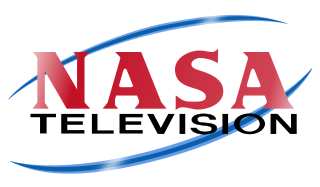Related Research Articles
WTTW is a PBS member television station in Chicago, Illinois, United States. Owned by not-for-profit broadcaster Window to the World Communications, Inc., it is sister to commercial classical music radio station WFMT. The two stations share studios in the Renée Crown Public Media Center, located at 5400 North Saint Louis Avenue in the city's North Park neighborhood; its transmitter facility is atop the Willis Tower on South Wacker Drive in the Chicago Loop. WTTW also owns and operates The Chicago Production Center, a video production and editing facility that is operated alongside the two stations.

JOCX-DTV, branded as Fuji Television or Fuji TV, is a Japanese television station that serves the Kantō region as the flagship station of the Fuji News Network (FNN) and the Fuji Network System (FNS). The station is owned-and-operated by Fuji Television Network, Inc., itself a subsidiary of Fuji Media Holdings, Inc., a certified broadcasting holding company under the Japanese Broadcasting Act, and affiliated with the Fujisankei Communications Group. It is headquartered in the Fuji Broadcasting Center in Odaiba, Minato, Tokyo and is one of ''five private broadcasters based in Tokyo''.

Citytv is a Canadian television network owned by the Rogers Sports & Media subsidiary of Rogers Communications. The network consists of six owned-and-operated (O&O) television stations located in the metropolitan areas of Toronto, Montreal, Winnipeg, Calgary, Edmonton, and Vancouver, a cable-only service that serves the province of Saskatchewan, and three independently owned affiliates serving smaller cities in Alberta and British Columbia. There is also one station using the brand name serving Bogotá, Colombia.

CHCH-DT is an independent television station in Hamilton, Ontario, Canada. Owned by Channel Zero, the station maintains studios on Innovation Drive in the west end of Hamilton; prior to 2021, it was located near the corner of Jackson and Caroline streets in downtown Hamilton for nearly 65 years. The station has additional offices at the Marriott on the Falls in Niagara Falls, Ontario. Its old transmitter was located on First Road West in the former city of Stoney Creek; it was demolished in March 2024 and replaced with a new transmitter located on Highway 5 near Millgrove Side Road in Dundas, Ontario, which started transmitting in November 2023.

GMA Network is a Philippine commercial broadcast network, serving as the flagship property of publicly traded GMA Network Inc.. The network is headquartered in the GMA Network Center in Quezon City and its transmitter facilities, Tower of Power, are located at Tandang Sora Avenue, Barangay Culiat also in Quezon City, with regional stations and offices strategically located in over twelve major cities across the country including Dagupan, Naga, Bacolod, Iloilo, Cebu and Davao. GMA Network is commonly referred to as the Kapuso Network in reference to the outline of the company's logo; the branding was introduced on October 27, 2002 during an episode of its now-defunct Sunday noontime variety show, SOP.

PBS Kids is the brand for most of the children's programming aired by PBS in the United States. The target audience is children between the ages of 2 and 8. PBS Kids brand programming is aired daily on most local PBS stations during a daytime block, typically scheduled in the morning hours, in addition to a separate 24/7 channel. Both the block and 24/7 service are broadcast over the air, via cable and satellite providers and on streaming platforms. Select programming is also available internationally.
Community television in Australia is a form of free-to-air non-commercial citizen media in which a television station is owned, operated and/or programmed by a community group to provide local programming to its broadcast area. In principle, community television is another model of facilitating media production and involvement by private citizens and can be likened to public-access television in the United States and community television in Canada.

ABS-CBN was a Philippine commercial broadcast network that served as the flagship property of the ABS-CBN Corporation, a company under the Lopez Holdings Corporation. The network was headquartered at the ABS-CBN Broadcasting Center in Quezon City, that had additional offices and production facilities in 25 major cities including Baguio, Naga, Bacolod, Iloilo, Cebu, Davao, and Bulacan, where ABS-CBN's production and post-production facility in Horizon IT Park is located. ABS-CBN was colloquially referred to as the Kapamilya Network; its brand was originally introduced in 1999 and was officially introduced in 2003 during the celebration of its 50th anniversary, and was used until it was forced by the National Telecommunications Commission to cease and desist from free-to-air broadcasting due to the lack of congressional franchise. ABS-CBN is the largest media company in the Philippines and is the oldest television broadcaster in Southeast Asia. The network is metonymically called as "Ignacia" due to the location of its headquarters ABS-CBN Broadcasting Center along Mother Ignacia Street in Quezon City.

People's Television Network is the flagship state broadcaster owned by the Government of the Philippines. Founded in 1974, PTV is the main brand of People's Television Network, Inc. (PTNI), one of the attached agencies under the Presidential Communications Office (PCO).
A pirate television station is a broadcast television station that operates without a broadcast license. Like its counterpart pirate radio, the term pirate TV lacks a specific universal interpretation. It implies a form of broadcasting that is unwelcome by the licensing authorities within the territory where its signals are received, especially when the country of transmission is the same as the country of reception. When the area of transmission is not a country, or when it is a country and the transmissions are not illegal, those same broadcast signals may be deemed illegal in the country of reception. Pirate television stations may also be known as "bootleg TV", or confused with licensed low-power broadcasting (LPTV) or amateur television (ATV) services.

KTVL is a television station in Medford, Oregon, United States, affiliated with CBS and The CW Plus. Owned by Sinclair Broadcast Group, the station has studios on North Fir Street in downtown Medford, and its transmitter is located atop Mount Ashland, 15 miles (24 km) south of the city.

Michael Shamberg is an American film producer and former Time–Life correspondent.

Univision is an American Spanish-language free-to-air television network owned by TelevisaUnivision. It is the United States' largest provider of Spanish-language content. The network's programming is aimed at the Latino public and includes telenovelas and other drama series, sports, sitcoms, reality and variety series, news programming, and imported Spanish-language feature films. Univision is headquartered in Midtown Manhattan, New York City, and has its major studios, production facilities, and business operations based in Doral, Florida.
The Videofreex were a pioneering video collective who used the Sony Portapak for countercultural video projects from 1969 to 1978. They were founded in 1969 by David Cort, Mary Curtis Ratcliff and Parry Teasdale, after Cort and Teasdale met each other at the Woodstock Music Festival. Other early members include Skip Blumberg, Chuck Kennedy, Davidson Gigliotti, Bart Friedman, Carol Vontobel, Nancy Cain, and Ann Woodward, with dozens of additional collaborators participating in the group's cooperative projects.

The Public Broadcasting Service (PBS) is an American public broadcaster and non-commercial, free-to-air television network based in Arlington, Virginia. PBS is a publicly funded nonprofit organization and the most prominent provider of educational programs to public television stations in the United States, distributing shows such as Frontline, Nova, PBS News Hour, Masterpiece, Sesame Street, This Old House and American Experience.

WSNS-TV is a television station in Chicago, Illinois, United States, serving as the local outlet for the Spanish-language network Telemundo. It is owned and operated by NBCUniversal's Telemundo Station Group alongside NBC outlet WMAQ-TV. The two stations share studios at the NBC Tower on North Columbus Drive in the city's Streeterville neighborhood and broadcast from the same transmitter atop the Willis Tower in the Chicago Loop.

NASA TV was the television service of the National Aeronautics and Space Administration (NASA). It was broadcast by satellite with a simulcast over the Internet. Local cable television providers across the United States and amateur television repeaters carried NASA TV at their own discretion, as NASA-created content is considered a work of the U.S. government and is within the public domain. NASA TV was also available via various cable, satellite, and over-the-top media services worldwide. The network was formally created in the early 1980s to provide NASA managers and engineers with real-time video of missions. NASA has operated a television service since the beginning of the space program for archival purposes, and to provide media outlets with video footage.
ATSC 3.0 is a major version of the ATSC standards for terrestrial television broadcasting created by the Advanced Television Systems Committee (ATSC).
Parry Teasdale is an American video artist and a founding member of the early video collective Videofreex. He was also involved with Lanesville TV, one of the first unlicensed TV stations, throughout the 1970s.

Mary Curtis Ratcliff is an American visual artist.
References
- 1 2 "Greetings From Lanesville". Media Burn Archive.
- 1 2 Michel, Karen (22 March 2015). "Decades Before YouTube, Video Pioneers Captured Turbulent Era". NPR. Archived from the original on 27 March 2015. Retrieved 29 March 2015.
- ↑ "About the Group". Videofreex.com Digital Archive 1969-2019. Archived from the original on 29 December 2022. Retrieved 29 December 2022.
- 1 2 "Lanesville TV". Video History Project.
- ↑ Boyle, Deirdre (1997). Subject to Change: Guerrilla Television Revisited. Cary, NC, USA: Oxford University Press.
- ↑ <ref>Teesdale, Parry (1980). "Federal Communications Commission (FCC) Report: A Micro-TV Service in the United States" (pdf).